
Stories
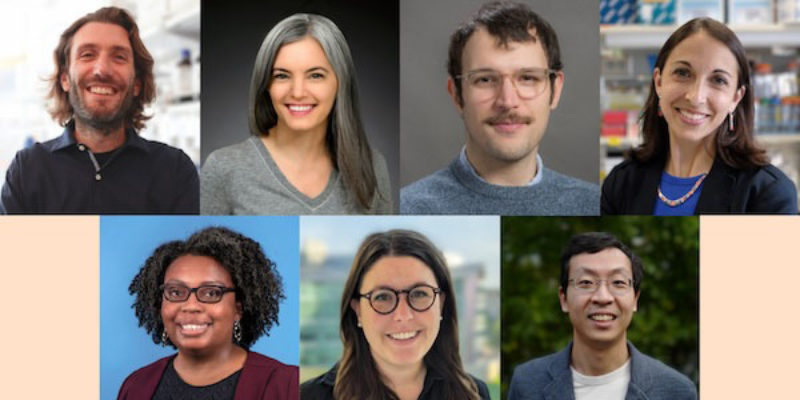
Announcing the 2024 Rita Allen Foundation Scholars
Seven pioneering scientists selected for major biomedical research grants.
The Rita Allen Foundation has named its 2024 class of Rita Allen Foundation Scholars, celebrating seven early-career leaders in the biomedical sciences whose research holds exceptional promise for revealing new pathways to advance human health.
The selected Scholars will receive grants of up to $110,000 annually for up to five years to conduct innovative research in neuroscience, cancer, immunology, and pain. The topics they will pursue include how genome architecture controls brain architecture, the “dark matter” of the bacterial immune system, how kinase signaling changes as tumor cells enter and leave the bloodstream, and uncovering the fundamental mechanisms of internal mechanical pain.
“The remarkable scientists selected to join the Class of 2024 are leading ambitious research to advance knowledge about the body’s complex processes and catalyze the development of novel strategies for preventing and treating human diseases,” said Elizabeth Good Christopherson, President and Chief Executive Officer of the Rita Allen Foundation.
Since 1976, the Rita Allen Foundation has invested in more than 200 biomedical scientists at the early stages of their careers, enabling them to pursue research with above-average risk and promise. Scholars have gone on to make fundamental contributions to their fields of study and have won recognition including the Nobel Prize in Physiology or Medicine, the National Medal of Science, the Wolf Prize in Medicine, the Lasker-Koshland Award for Special Achievement in Medical Science, and the Breakthrough Prize in Life Sciences.
Five of the 2024 Scholars were nominated by research institutions across the United States for their promising work in the fields of neuroscience, cancer, and immunology, and were selected by the Rita Allen Foundation’s Scientific Advisory Committee of leading scientists and clinicians.
The two investigators selected to receive the Rita Allen Foundation Scholars Award in Pain were chosen by a Review Committee of the U.S. Association for the Study of Pain (USASP), including previous Rita Allen Pain Scholars and other leaders in the field. Offered in partnership with USASP, the Rita Allen Foundation Scholars Award in Pain supports investigators whose research on the biology of pain holds exceptional promise for revealing new pathways to understand and treat pain conditions.
The seven pioneering early-career researchers selected as 2024 Rita Allen Foundation Scholars are:
Daniele Canzio, Weill Institute for Neurosciences, University of California, San Francisco; Milton E. Cassel Scholar
Kara Marshall, Baylor College of Medicine; Award in Pain
Alexander Meeske, University of Washington
Elizabeth Pollina, Washington University School of Medicine in St. Louis
Erica Pratt, Boston University
Katelyn Sadler, Center for Advanced Pain Studies, University of Texas at Dallas; Award in Pain
Longzhi Tan, Stanford University
Below, these newest Rita Allen Foundation Scholars offer a window into their current research as well as reflections on their pathways to discovery science:
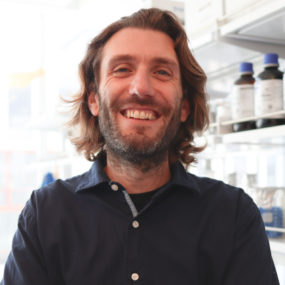
Daniele Canzio, University of California, San Francisco
Assistant Professor, Neurology
Milton E. Cassel Scholar
B.Sc., University of California, Santa Barbara
Ph.D, University of California, San Francisco
Daniele Canzio has been designated the Milton E. Cassel Scholar for the 2024 class of Rita Allen Foundation Scholars. This special award honors the memory of a longtime President of the Rita Allen Foundation who passed away in 2004.
The establishment of functional neural circuits relies on the ability of neurons to discriminate self from non-self. This self/non-self discrimination requires the generation of an astonishing number of cell-surface protein “barcodes” that uniquely “mark” individual neurons with their own identity. Neurons expressing the same barcodes repel one another, while neurons expressing different barcodes are allowed to interact. Given that a human brain houses billions of neurons, how this remarkable number of cell-surface barcodes is generated from a single genome remains a mystery. Our studies point to a new role of genome architecture and its dynamics in the regulation of the transcriptional diversity underlying the barcoding strategy of neurons to recognize self from non-self, providing a novel mechanism to achieve cellular individuality. Our findings have broad implications, from uncovering the molecular basis of neural wiring during brain development to revealing new insights on the role of genome structure in defining cellular fate and function.
What will funding from the Rita Allen Foundation allow you to do?
To date, our understanding of the mechanisms by which genome structure regulates gene expression rests, almost exclusively, on the use of rapidly dividing cell culture systems. We know almost nothing about how genome folding might regulate gene expression programs in neurons to shape the long-term “behavior” of these cells which do not divide and remain functional for decades. As a Rita Allen Foundation Scholar, I am excited to bridge this knowledge gap to test new models for how genome architecture controls brain architecture to drive the generation of cell-surface barcoding diversity required for appropriate neural wiring.
How did you enter this career path? Was there anyone or anything that particularly inspired you?
My path to neuroscience was not a linear one and was much influenced by incredible mentors. Born in Italy, I studied classics, until I became fascinated by chemical reactions. This passion for chemistry I owe to my high school teacher, Elisabetta Bellagamba, who convinced me to move to the United States to study science. I studied chemistry at the University of California, Santa Barbara and moved immediately after that to the University of California, San Francisco for my graduate studies in the lab of Geeta Narlikar, to investigate the mechanism of assembly of silenced chromatin states. My transition to neuroscience was shaped by my relationship with Stavros Lomvardas, whose work on olfactory receptor gene choice was, and continuous to be, a never-ending source of inspiration. As a Helen Hay Whitney Postdoctoral Fellow, I moved to the lab of Tom Maniatis to study the logic of neural self-avoidance. Among many lessons from my mentors, I learned the significance of digging deep into fundamental biological queries and the importance of training the next generation of scientists. In my lab, I embrace these lessons, nurture critical thinking and imagination, and work to inspire people as my outstanding mentors have inspired me.

Kara Marshall, Baylor College of Medicine
Assistant Professor, Neuroscience
B.Sc., Texas A&M University
Ph.D., Columbia University
Internal organs move, stretch, and squeeze as part of their normal functions. The mechanical forces caused by these movements are detected by the nervous system to generate important sensations, such as a full bladder, and to govern physiological processes themselves, like urination. Unfortunately, during disease, internal forces can also cause pain. The Marshall lab seeks to understand the molecules and cell types that mediate the detection of mechanical force within the body, in both healthy and disease states. We hope to uncover fundamental mechanisms of internal mechanosensation, and potentially pave the way for new therapies targeting internal pain.
What will funding from the Rita Allen Foundation Award in Pain allow you to do?
We are thrilled to have this funding to help launch projects in the lab to understand internal mechanical pain. This will represent a transition in our lab from our efforts to understand foundational mechanisms of internal mechanosensation in healthy organs to understanding how this is altered in disease states. During disease or inflammation, normal organ movements often become painful, which causes distress and discomfort for patients. The detection of chemical and inflammatory cues is better studied, but how mechanical cues are sensed is still relatively underexplored. We hope this can lead us to new avenues of understanding and point to novel pain treatments.
How did you enter this career path? Was there anyone or anything that particularly inspired you?
For this particular line of work in our lab, I am inspired by my cousin who has been bravely and patiently fighting chronic pain for years. She provides personal motivation to understand these difficult problems.
Could you share any interesting science media you currently enjoy, such as a book, podcast, film, or social media channel?
The Exceptions, The Code Breaker, and Breaking Through are all well-told tales of inspiring women scientists! For shorter stories, check out the Stories of WiN Podcast.
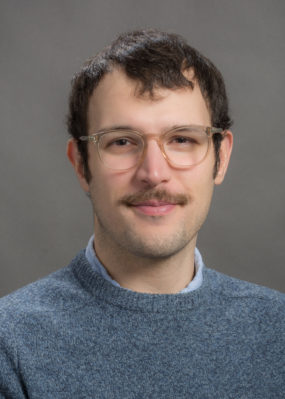
Alexander Meeske, University of Washington
Assistant Professor, Microbiology
B.Sc., University of Connecticut
Ph.D., Harvard University
All organisms have evolved strategies to cope with the threat of invasion by parasites. Bacteriophages—viruses that infect and kill bacteria—impose strong pressures on their hosts, giving rise to diverse anti-viral defenses, including restriction-modification and CRISPR-Cas systems. The well-documented utility of these systems for genetic engineering, combined with the rise of facile microbial genome sequencing, has ushered in a renaissance in the study of prokaryotic immune systems. The Meeske Lab has developed native host models to investigate the interfaces between diverse immune effectors, prokaryotic hosts, and the viruses that infect them. Using these tools, we will expand our understanding of the ways in which bacterial immune systems are controlled by their hosts, the cues to which they naturally respond, and the counter-defense strategies taken by bacteriophages to overcome them. We anticipate that these efforts will refine the toolkit of modern molecular biology and inform bacteriophage-based strategies for antimicrobial intervention.
What will funding from the Rita Allen Foundation allow you to do?
Until now, my research group has focused on the mechanisms of CRISPR-Cas immunity and how they are subverted by anti-CRISPR proteins. Becoming a Rita Allen Foundation Scholar will allow my research group to explore the “dark matter” of the bacterial immune system: hundreds of newly anti-viral defenses that work via poorly understood mechanisms. The award will further allow our group to begin applying our findings to the therapeutic applications of pathogen-specific bacteriophages, which represent an emerging alternative to antibiotics.
How did you enter this career path? Was there anyone or anything that particularly inspired you?
As a little boy growing up on the Connecticut shoreline, I was fascinated by the teeming lifeforms I could find looking under rocks and in tide pools at the beach. I knew I loved biology and early as an undergraduate at the University of Connecticut, I decided to commit to a career that enabled me to make scientific discoveries. My first taste of research came as an undergraduate in the lab of Adam Zweifach, where I studied the cell biology of T cells, and first experienced the wonderful feeling of formulating a hypothesis, designing an experiment to test it, and getting an answer. Working with my Ph.D. thesis advisor David Rudner was a formative experience, where I learned how to obtain convincing and beautiful data and build it into a scientific story. Working with my postdoctoral mentor Luciano Marraffini (2012 RAF Scholar) was an amazing opportunity that was full of important lessons and laid the foundation for my independent research program. I am truly grateful to my numerous mentors and colleagues for their continued guidance and enthusiasm throughout my research career.
Could you share any interesting science media you currently enjoy, such as a book, podcast, film, or social media channel?
I find A Genetic Switch by Mark Ptashne and The Eighth Day of Creation by Horace Freeland Judson to be captivating accounts of science in eras of limited technology, when researchers had to rely on strong deductive reasoning.
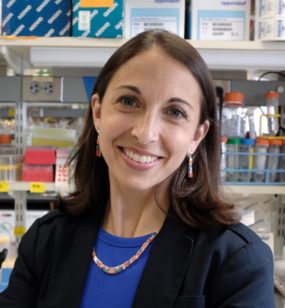
Elizabeth Pollina, Washington University School of Medicine in St. Louis
Assistant Professor, Developmental Biology
B.A., Princeton University
Ph.D., Stanford University
A striking feature of the nervous system is its continual adaptation to environmental cues throughout the lifespan of an animal. Environmental stimuli trigger changes in neuronal activity that, in turn, induce transcriptional programs controlling adaptive modifications to neuronal circuitry. Stimulus-induced transcription is, however, a risky endeavor. During transcription, DNA is cut, unwound, and reannealed in a process that has the potential to create mutations. Across a lifetime, a neuron may undergo this process millions of times. How do animals balance the benefits of inducible transcription for plasticity with the intrinsic risks it poses to their genetic code? Our knowledge of genome integrity derives primarily from dividing cells grown in culture conditions. We lack a fundamental understanding of how neurons repair genomic insults in vivo and how the dynamic stimuli neurons receive further impinge on the genome. The Pollina lab leverages tools and techniques from neuroscience, epigenetics, and DNA repair to advance our knowledge of genome fidelity in the nervous system. We characterize the pathways downstream of external signaling cues that preserve neuronal genomes in short- versus long-lived species. We examine how lifestyle factors, such as diet and sleep, impact signal-dependent transcription and genome repair across time. Ultimately, we aim to use this knowledge to design strategies that prevent or even correct molecular damage in aged and diseased neurons.
What will funding from the Rita Allen Foundation allow you to do?
Rita Allen Foundation funding will allow my lab to test new hypotheses using intricate molecular techniques adapted for use in the complex brain. We will combine optogenetic activation of neurons with new methods for cell-type-specific, CRISPR-based gene manipulation and genome-wide mapping of DNA breaks. We can tackle the challenges associated with live-imaging to simultaneously visualize transcription and DNA breaks in active neurons. With the unrestricted support from the Rita Allen Foundation, we are developing screens for factors that suppress mutagenesis at neuronal activity-induced DNA breaks. This support has given my lab the freedom to examine cutting-edge neuroscience questions during the aging process without concerns of funding.
How did you enter this career path? Was there anyone or anything that particularly inspired you?
I was raised in a home deeply committed to advancing young women in the fields of mathematics and science. My mother, a first-generation college student who pursued a master’s degree in mathematics, was a fierce advocate for women. She started the Women in Science and Engineering (W.I.S.E.) program at the all-girls high school where she served as both a math teacher and the head of school. I was immersed in the culture of this school, where I was eventually educated myself, and this upbringing instilled in me a desire to pursue education at the highest level. From her example, I knew I wanted to be a scientist or engineer. In my early college years, I took advantage of a rare opportunity to work in the lab of Pietro De Camilli. I fell in love with neurobiology and academic research and have never looked back.
Could you share any interesting science media you currently enjoy, such as a book, podcast, film, or social media channel?
I enjoy the BBC’s Planet Earth series narrated by David Attenborough. I am fascinated by the creative innovations that organisms have evolved to thrive in harsh environments. I hope to someday study the nervous systems of animals with extreme longevity.
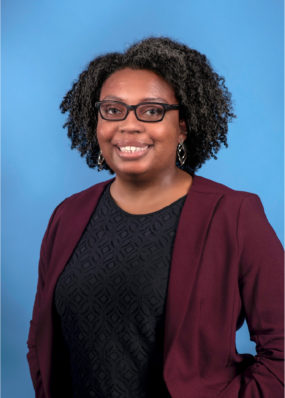
Erica Pratt, Boston University
Assistant Professor, Biomedical Engineering
B.Sc., Carnegie Mellon University
Ph.D., Cornell University
The peripheral circulation and other biofluids contain a variety of tumor-derived analytes, ranging from intact cells and exosomes to free nucleic acids. These ‘liquid biopsies’ offer a readily accessible and minimally invasive strategy for taking real-time snapshots of a dynamic tumor landscape. Critically, liquid biopsies can improve patient outcomes by revealing therapeutically actionable subpopulations missed using conventional tissue biopsies. However, these circulating biomarkers are extremely rare and require sophisticated strategies to isolate and characterize them. The Pratt Laboratory develops enabling technologies for ultra-sensitive multiplexed profiling of liquid biopsies for cancer monitoring and precision medicine. Our work leverages next-generation genetic tools in combination with techniques from bioengineering and chemical biology.
What will funding from the Rita Allen Foundation allow you to do?
Kinases and other PTM (post-translational modification) enzymes serve an essential regulatory role in tumor cell proliferation, migration, invasion, and survival. However, how kinase signaling changes as tumor cells enter and leave the bloodstream is mostly unknown. The Rita Allen Foundation Scholars award will empower our laboratory to take risks and develop the cutting-edge tools required to begin addressing these questions.
How did you enter this career path? Was there anyone or anything that particularly inspired you?
I was fortunate to have opportunities to engage in research as a high schooler. This experience was formative to my career as a scientist and engineer. My doctoral training shaped my long-term interest in liquid biopsy research. As a graduate student, I developed a microfluidic liquid biopsy platform that was eventually used in a multi-institutional clinical trial. My postdoctoral training provided a multidisciplinary perspective and made me a more effective and creative researcher. Throughout my career, I have benefited from an amazing mentorship network that not only includes my Ph.D. advisor and postdoctoral mentor, but also colleagues who have been phenomenal advocates.
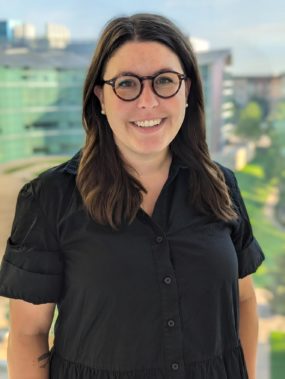
Katelyn Sadler, University of Texas at Dallas
Assistant Professor, Neuroscience
B.Sc., University of Pittsburgh
Ph.D., Duquesne University
Trillions of bacteria live in and on the surface of the human body. These microorganisms and the metabolites they produce are collectively termed the microbiome and are known to interact with various host cells. We are just beginning to deconstruct the complex, bi-directional signaling that occurs between microbiomes and the peripheral nervous system, but we believe that this type of work will provide fundamental insight into sensory processes that occur in health and disease. In particular, the Sadler Lab is very interested in understanding how tissue-specific microbiomes contribute to normal sensation and how changes in the microbiome contribute to chronic pain. Using a combination of preclinical animal models, healthy human tissues, and patient samples, we ultimately aim to identify novel microbiome-related therapeutic targets for pain management.
What will funding from the Rita Allen Foundation Award in Pain allow you to do?
This award will allow us to ask if antibiotic drug use is a risk factor for chronic visceral pain conditions like irritable bowel syndrome. Even though antibiotics are among the most widely prescribed medications worldwide, we have a very limited understanding of how these drugs, which were originally identified and developed for their actions against bacteria, affect mammalian host physiology. Funding from the Rita Allen Foundation will allow us to determine if and how antibiotics change the communication between gut bacterial populations and sensory neurons, ultimately making the host more susceptible to the development of chronic gut pain.
How did you enter this career path? Was there anyone or anything that particularly inspired you?
My direct scientific mentors are the reason I am an academic scientist. Neither of my parents have a college degree so my undergraduate research supervisor played a critical role in guiding me through early career decisions and ultimately encouraging me to apply to graduate school. My Ph.D. supervisor deserves a tremendous amount of credit for taking me on as his first graduate student even though I had never taken a neuroscience class or worked with mice prior to joining his basic neurobiology research lab. I try to model his patience and support with my own trainees daily. And last, but certainly not least, my postdoctoral mentor regularly models how to be an incredibly successful woman in science. Each of these individuals inspired me to stay in this career and to pay their generosity forward to the next generation of scientists who I will mentor.
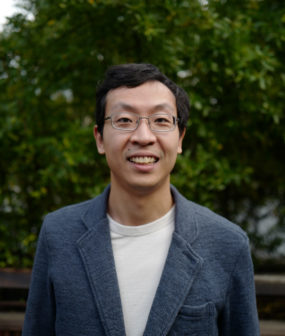
Longzhi Tan, Stanford University
Assistant Professor, Neurobiology
B.Sc., Massachusetts Institute of Technology
Ph.D., Harvard University
How do cells in our body develop highly specialized functions, and how do they degenerate as we age? Genome architecture—the 3D folding of 2 meters of DNA into a 10-μm nucleus to control gene expression—plays a critical role in both normal physiology and many diseases. To measure this structure, I built an optics-free “microscope” that uses DNA sequencing to measure pairwise distances between molecules, solving the first 3D structure of the human genome and discovering highly specialized genome architecture across the body (brain, nose, eye, blood, etc.) and across the life span. Most notably, I demonstrated 3D genome “structure typing” —just by looking at a cell’s DNA structure, one can tell what type of cell it is. I also found that these intricate structures drive neurodevelopment and change progressively over around 100 years. My lab’s work, therefore, reveals a new physical dimension of development and aging.
What will funding from the Rita Allen Foundation allow you to do?
The Rita Allen Foundation Scholars award will allow me to pursue high-risk, cross-discipline research at the forefront of genomics and neuroscience, far beyond my other projects. Combining single-cell genomics, neuroscience, computational biology, and evolutionary biology, my lab will address two fundamental challenges facing the field: to dissect the physical/chemical principles behind genome folding and to understand our genome’s structure-function relationship. To do so, we will build the next generation of “biochemical microscopes” to precisely measure and manipulate the genome architecture of individual cells in a living brain. This is my first step toward building “the AlphaFold for 3D genome,” paving the way for precisely rewiring the genome in 3D to restore normal brain functions after disease and aging. My discoveries and tools will be widely applicable to many areas of biomedicine such as cancer and immunology, enabling deeper understanding and better engineering of the human genome.
How did you enter this career path? Was there anyone or anything that particularly inspired you?
Throughout high school, I was fortunate to participate in physics olympiads. I had an amazing time learning STEM together with my best friends, traveling the world (the 2008 competitions were held in Mongolia and in Vietnam), and making new friends across the globe who also loved physics. This fantastic experience motivated me to pursue a scientific career, transferring from Peking University to MIT in 2009. Since then, I have been constantly inspired by my many extraordinary mentors at each stage of my career, including Jeff Gore, Pardis Sabeti, Wit Busza (undergrad), Xiaoliang Sunney Xie (grad school), Karl Deisseroth, Ibrahim Cissé, Howard Chang (postdoc), and Tom Clandinin (faculty). They have been my role models, and I work tirelessly to pay forward their kindness, by fostering the next generation of diverse young scientists in my lab.
Could you share any interesting science media you currently enjoy, such as a book, podcast, film, or social media channel?
I enjoy scientific discussion on Twitter/X. I love seeing other scientists posting their latest research, debating fundamental questions, and sharing personal journeys. My scientific animations of 3D genome structures have gathered more than 150,000 views.